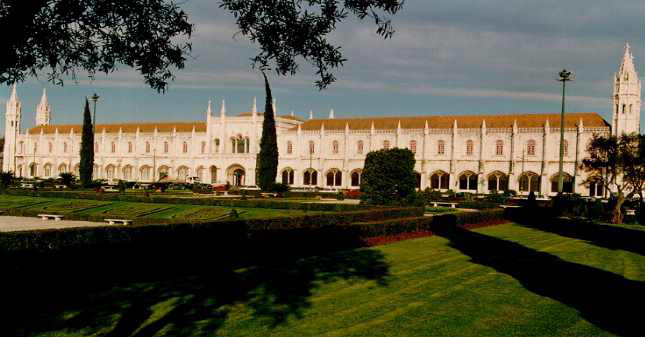

Mosteiro dos Jerónimos
(Jerónimos Monastery)
Henry the Navigator had built a small monastery on this site in the 15th
century, and Vasco da Gama passed a night of prayer nearby before setting
out to "discover" India. When he returned, his king, Manuel I, ordered
Henry's simple structure replaced by a richly endowed monastery for his
own patron saint Jerónimos in thanks for the bounty flowing over
the new trade route. The original plans were drawn by the French architect
Diogo Boytac, a brilliant innovator.
Seventeen years later, Boytac was succeeded by João de Castilho, who brought along the Fleming João de Ruão and the French sculptor, Nicolas Chanterene, to whom most of the decoration is due. Work was complete by 1572óless than 75 years. By great fortune, the earthquake of 1755 caused only slight damage to the complex, so this masterpiece remains in essentially its original state.
This white limestone monastery contains an elegant porch to the right of the entrance, which inserts intricacy into an otherwise monolithic façade. João de Castilho carved this busy canopy containing statues of the four Sybils, four prophets, and four church fathers, including Saint Jerónimos, all surrounding the Virgin and Child. Above the Virgin are two scenes from Saint Jerónimos's life.
The soaring church interior is vast. Left, after the first chapel, is the tomb of Vasco da Gama borne on the back of six lions. King reposes in what would normally be the apse. His son and successor, João III, lies to the right.
Exit through the west entrance to enter the cloisters through the gift shop. The vaulting in the cloisters is fine and the sculpture fantastically rich. The galaxy of animals, vegetables, and twisting ropes carved on the columns and walls earns this monastery its fame, and epitomised the Manueline style.


